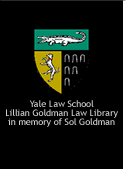Tape #: number of tape in collection.
Episode #: episode number per SABC reference.
To request a tape, refer to the episode number that is on the label. The episode number, rather than the tape number, is also the reference on the SA tape (along with the SA version of the date, i.e. dd/mm/yy)
Date: note that the South African date convention is dd/mm/yy, e.g. 5 September 1999 is 05/09/1999
Spelling: uses British/South African convention
Places, Incidents, Concepts
Violence by liberation movements: includes all liberation movements and/or their armed wings, i.e. ANC (MK), PAC (APLA)
Cross border operations: includes all activity in Southern Africa (such as Lesotho, Angola, Mozambique, Namibia) as well as overseas (such as London, Seychelles)
Actions such as torture, shooting, bombing etc are defined by default as those actions undertaken by the South African apartheid government. If actions were taken by others (such as liberation movements, vigilantes, IFP) they are specified by the name of the incident (e.g. Magoo’s Bar Bombing) and captured in the category “violence by liberation movements” or “vigilantes” etc
Victims are also defined by default as victims of South African apartheid government activities. If victims are victims of violence by others (such as liberation movements, vigilante actions, or gangs) they are designated as such
Names
On the whole, individual names of people are followed by a designation of whether they are a victim or perpetrator. For those who suffered violations of human rights, such individuals are generally classified as a victim or relative (of a victim) and then further classified in terms of the kind of testimony offered in the episode: witness, interview, or mention. For those who committed human rights violations, such individuals are classified as perpetrator and then further classified in terms of the kind of testimony offered in the episode: witness, interview, or mention. If they apply to the TRC for amnesty, they are classified as such. If the Special Report provides information regarding the outcome of the individual’s amnesty application, a designation of granted or refused is included.
Victim: person who suffered a violation of human rights
Relative: person related to the victim who offers testimony or interview; exact relationship not specified
Victim or Relative Opposing amnesty: if victim or relative appears as witness or claims in an interview that they are opposed to the amnesty application of an individual
Perpetrator: individual named as such by themselves, a witness, or by Special Report
Amnesty applicant: individual tagged as such if information is provided; note some people may have applied for amnesty but not be described as such in this index if this information was not disclosed
Amnesty applicant granted or refused: designated as such if this information was provided in the Special Report; note, some amnesty applicants were granted amnesty for some actions but denied amnesty for other actions and all decisions may not be reflected in this index; also, some decisions which were made will not be captured in this index if it was not mentioned
Witness: If testimony by individual at TRC is shown
Interview: If individual is interviewed by Special Report
Mentioned: If individual’s name is mentioned by witness, interviewee or reporter
An individual can be one of the above or all three depending on which episode you view.
Titles and organizational affiliation are captured when mentioned
The spelling of many names have been verified or spelled according to Special Report subtitles; however, some are based on phonetic interpretations and may not be exact. Also, for some names, there are multiple spelling options.
If the first name is unintelligible or not mentioned, the individual is tagged as Mr. or Ms.
|


